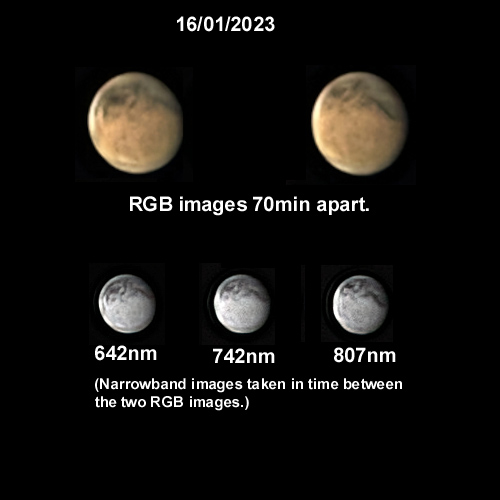 (John Arnold)
(John Arnold)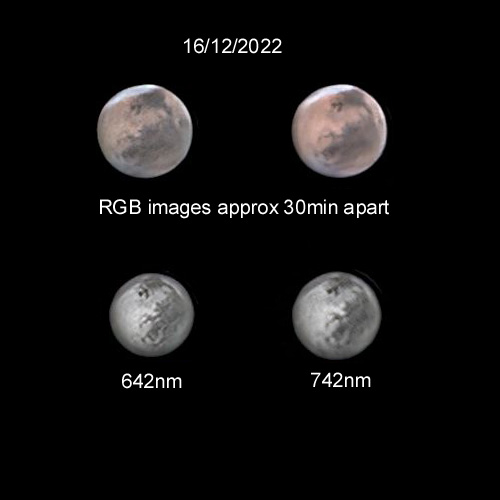 (John Arnold)
(John Arnold)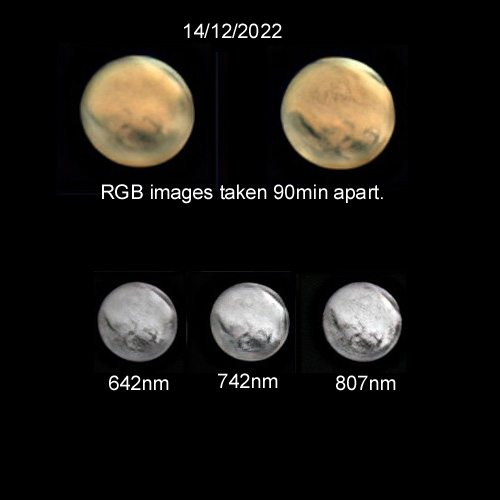 (John Arnold)
(John Arnold)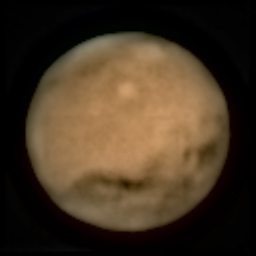 (James Clark 07/12/2022)
(James Clark 07/12/2022)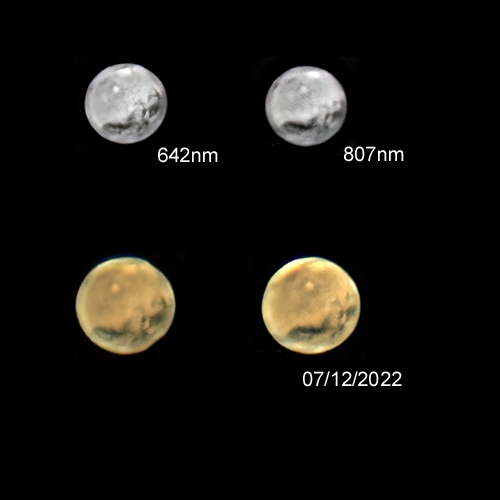 (John Arnold)
(John Arnold)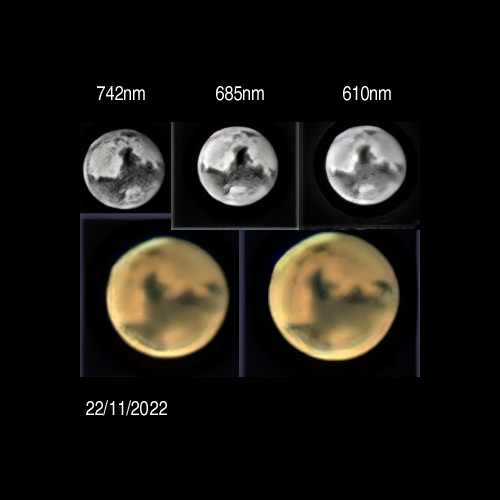 (John Arnold)
(John Arnold)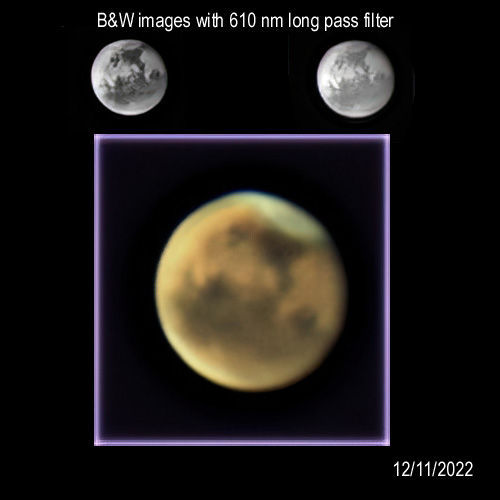 (John Arnold)
(John Arnold)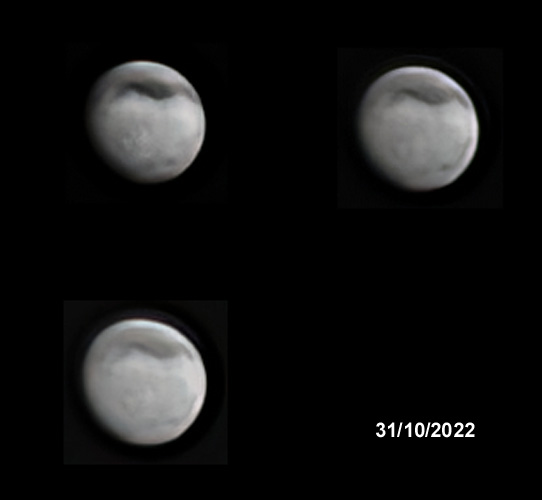 Oct. 2022 (John Arnold)
Oct. 2022 (John Arnold)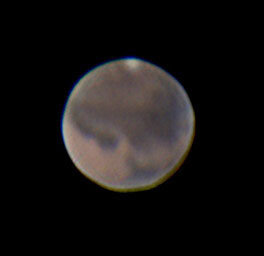 Oct. 2020 (Steve Strickland)
Oct. 2020 (Steve Strickland)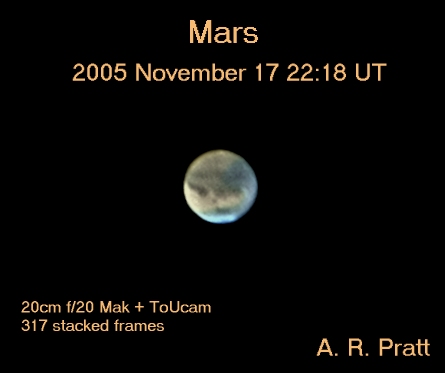
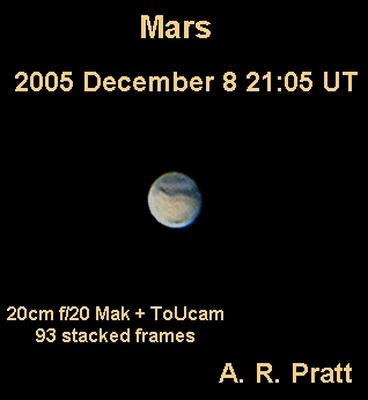
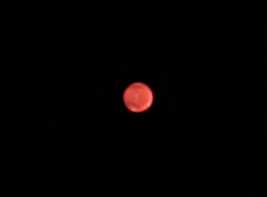 (Kevin Taylor)
(Kevin Taylor)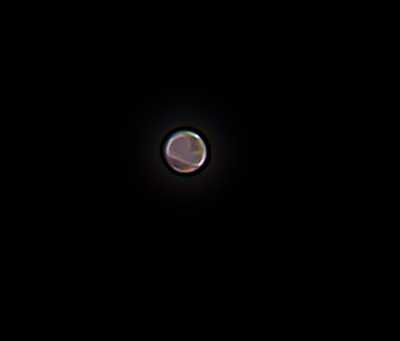 (Rod Levene)
(Rod Levene)
Information...

15 min Mars rotation captured by LAS member John Arnold.
Mars is the fourth planet form the Sun in our Solar system, and with a diameter about half that of the Earth is the second smallest. (Only Mercury is smaller.) It's reddish appearance is caused by rust (iron oxide), and it appears in the night sky as a bright orange dot.
Imaging Mars can be quite a challenge. Although it orbits the sun every 687 days, Mars' orbit is more eccentric than all the other planets except for Mercury. Close oppostions with Earth only occur every 15-17 years, meaning that when it is at it's closest point each year the apparent size of the planet can vary between about 14 to 24 arcseconds.
Imaging planets like Mars is usually done using 'lucky imaging', where a large number of photographs (or video) are taken in a short period. Turbulence in the Earth's atmosphere causes the image to distort & wobble from frame to frame, but by selecting only the best images from moments when the atmosphere was more stable, a better image can be generated. For example compare Steve Strickland's video with his October 2020 image shown above.
One useful tool when capturing images of Mars is the Mars Mapper which allows you to compare planetary features.
For more detailed information on Mars see the Wikipedia entry.